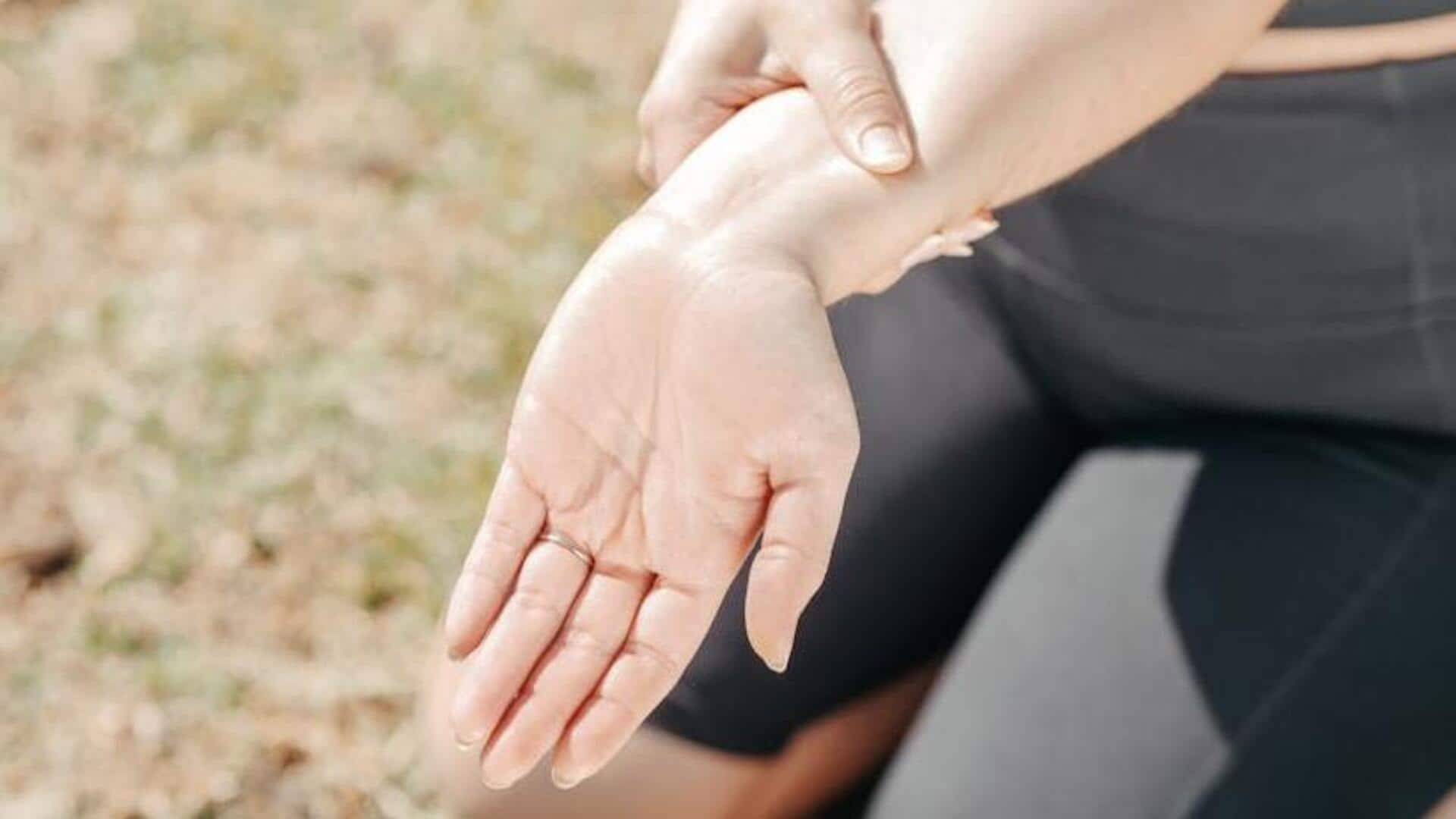
Wrist exercises everyone should do
What's the story
Wrist endurance and flexibility are vital for numerous everyday activities, be it typing or sports. Strengthening them can help you avoid injuries and perform better in a variety of tasks. By adding specific exercises to your routine, you can improve wrist strength and flexibility, making daily chores easier and more comfortable. Here are five exercises that could give you better wrist endurance and flexibility.
Rotation exercise
Wrist rotations for flexibility
Wrist rotations are a simple but effective exercise to boost flexibility. Just extend your arm in front of you, palm facing down. Rotate your wrist clockwise in a circular motion 10 times slowly, then switch to counterclockwise for another 10 rotations. Loosening the joints and increasing the range of motion is key to maintaining healthy wrists, and this movement does just that.
Curl exercise
Wrist curls with light weights
Wrist curls with light weights focus on the muscles that flex your wrist. Sit on a chair, rest your forearm on your thigh or on a table, and hold a light weight in your hand with the palm facing up. Curl the weight towards yourself slowly by bending at the wrist and lower it back. Do three sets of ten reps on each hand to build strength gradually without overstraining.
Reverse curl exercise
Reverse wrist curls for balance
Reverse wrist curls complement regular curls by working on opposing muscle groups, promoting balance in strength development. While sitting comfortably with your forearm supported on a surface, hold a light weight with an overhand grip. Lift the weight by extending at the wrist upwards before lowering it back down slowly. Aim for three sets of ten repetitions per hand to ensure balanced muscle growth.
Stretching exercise
Finger stretches to enhance mobility
Finger stretches also add a lot to total wrist mobility by focusing on smaller muscles around the region. Extend one arm forward with fingers spread wide apart. Use your other hand to gently pull back each finger towards yourself until you feel mild tension but not pain. Maintain this position for a few seconds before releasing it slowly. Repeat this process twice per finger daily as part of a stretching routine.
Rotation movement
Pronation and supination movements
Pronation means rotating palms downward, and supination upward. Both the movements involve different parts of the forearm musculature, and help in developing the entire region (including the wrists) comprehensively. Start by standing upright with arms at your sides. Turn palms to face the floor (pronate) and then ceiling (supinate) switching between the positions in a smooth, controlled way. 15 cycles per session, twice weekly, is ideal. Results come with consistency and practice over time.